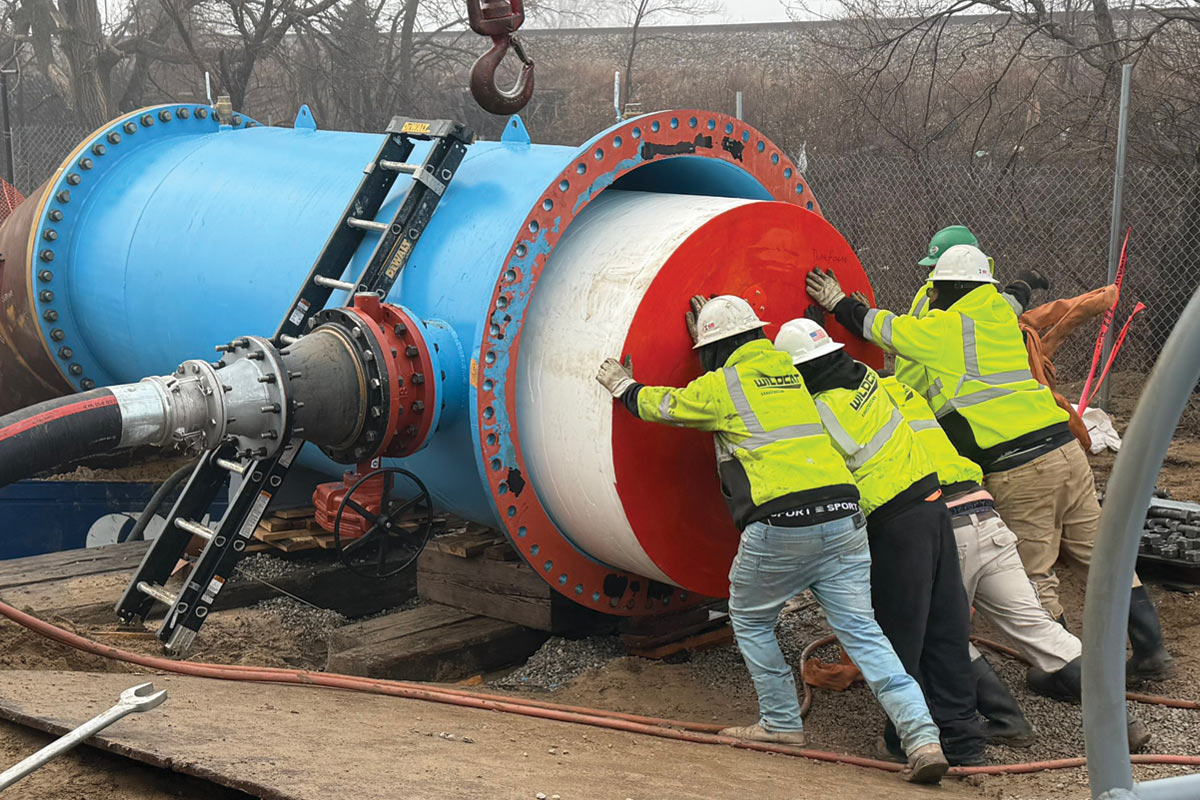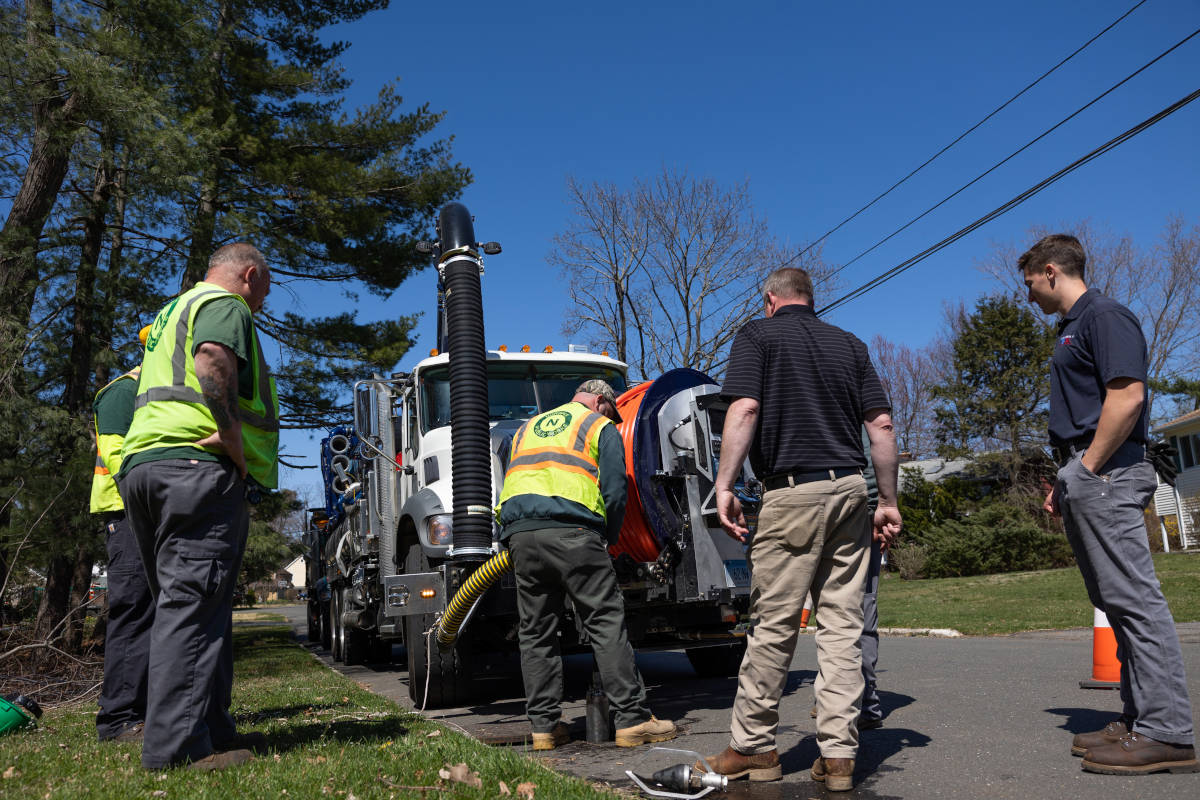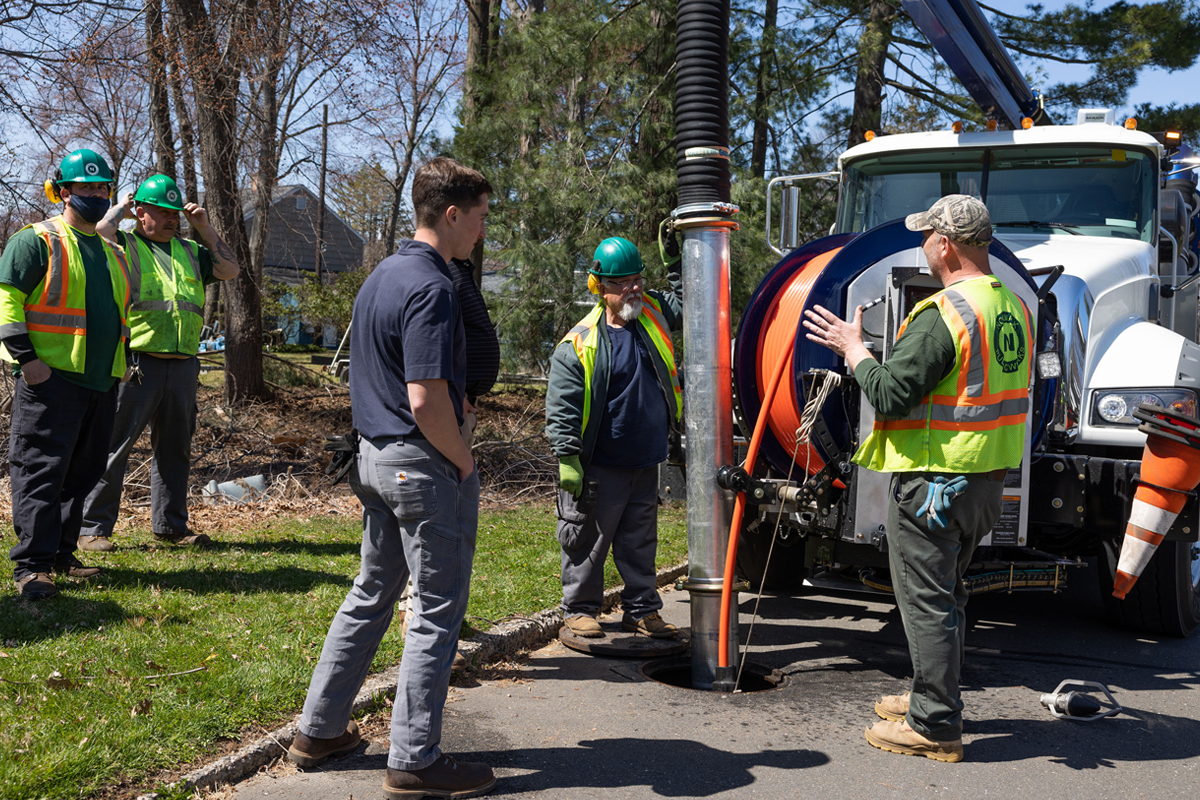Nozzle Buying: Knowing the Basics
June 29, 2011
 In a pipe cleaning application, using the right nozzle can make or break your operation. Using the wrong nozzle can cost you time and, more importantly, it can cost you money.
In a pipe cleaning application, using the right nozzle can make or break your operation. Using the wrong nozzle can cost you time and, more importantly, it can cost you money.So how do you select the proper nozzle? There are many nozzle manufacturers, distributors and suppliers out there, each eager to provide you with the proper tooling for your job needs. But do you know what you are looking for?
Trenchless Technology asked Dan Story, national sales manager for KEG Technologies, to give his professional perspective on nozzle selection. KEG is a manufacturer of sewer and storm cleaning nozzles, penetrating nozzles, floor cleaners, finishing nozzles and chain root cutters. Currently based in Madison, Miss., but soon to be relocating to a new facility in Spartanburg, S.C., KEG Technologies USA is the North American master distributor of KEG Kanalreinigungstechnik GmbH.
The importance of selecting the correct nozzle cannot be overstated to Story. “By selecting the right tool, you will use less time, fuel and water and you will get more done in a day, lowering your operating costs,” he said.
Story likes to compare selecting the proper nozzle to picking an automobile: The customer’s choices are endless but they must make critical decisions on style, performance, necessity and price. According to Story, the customer must choose between the different types and styles of nozzles to determine what is best for them. Customers can be creatures of habit, falling in love with one particular nozzle and using it for all applications.
“Every nozzle has its purpose. Nobody has ever built one nozzle that does it all,” he said. “You have nozzles that are designed to move debris. Nozzles designed to cut roots. Nozzles designed to cut grease. Wider angle nozzles to scour the pipe wall better to handle grease and nozzles with narrower angles designed to flush the line better… Every truck should be equipped with the right set of nozzles. Just like every mechanic needs the right set of tools. Customers so often overlook that.”
Pricing
Like all equipment, nozzle pricing runs from inexpensive to high priced. Which one is for your budget and needs? The National Association of Sewer Service Companies (NASSCO), in its Jetting Code of Practice, divides sewer cleaning nozzles into three categories: Tier One, Tier Two and Tier Three. Each category has its design and performance characteristics. Most manufacturers and vendors offer all three of nozzles types.
Tier One nozzles have a drilled orifice for creating pressure and have a flat inner surface for receiving and or redirecting water flow to the orifices — or as Story describes, “a chunk of metal with holes.” This nozzle does not provide strong fluid mechanics, making it the least effective nozzle type available. What makes them attractive is their price, as they are the least expensive to purchase (roughly $100 to $150) than the other nozzle tiers. According to Story, these nozzles are popular among budget-constrained municipal customers for their lower cost and not their product performance or durability. These nozzles have short lifecycles even under the best maintenance care — 90 days to a year.
Tier Two nozzles have better fluid mechanics than Tier One nozzles and offer replaceable inserts. Costing anywhere from $300 to $600, these nozzles have a longer lifecycle than their Tier One counterparts at nine months to two years and offer better product performance. Tier Three nozzles are your high-end nozzles, costing between $650 to $3,500, but offer even stronger fluid mechanics and replaceable inserts. These nozzles usually come with a three-year warranty on the body and a five-year warranty on the inserts. Customers who purchase these nozzles are interested in durability and product performance.
Knowing Your Angles
When selecting a nozzle, the customer should understand the angles of the nozzle’s jets and the impact they have on the cleaning application — do you prefer the nozzle to produce thrust to move itself down the pipe or wall force, which is another way to say cleaning ability. A wider angle nozzle will produce more wall force, enabling you to scour the pipe better. A narrower angle nozzle will propel itself into the pipe better but not clean it as well. “If I’m cleaning a 60-in. pipe and trying to scour the entire pipe, then I want a wider angle nozzle,” Story explained. “If I’m in a 6- or 8-in. pipe, I don’t want to use that wider angle nozzle because it could damage old or weak pipes.”
In selecting a cleaning tool for a specific project or to operate the tool on a specific jetter or combination truck, Story said the customer needs to know the variables of flow (gpm), pressure (psi), hose size (diameter) and hose length.
To get the most out of your nozzles, regular maintenance is critical. “Debris gets through and into your nozzle and can plug up an insert,” he said. “Always use a straight and smooth edge to clean your inserts. Never use a tip cleaner for welding torches to clean.”
Customer Smarts
Customers have an array of ways to research their purchase than ever before from word of mouth to the Internet to training. Story has seen the increased knowledge of his customers, something he takes pride in as well. Though he’s in the business of selling nozzles, educating his customers is also important to him. “They are asking better questions than in the past,” Story said. “Many times, your customers who more educated are more well-rounded into what works for them and what doesn’t.”
Story recommended that operators review NASSCO’s Jetting Code of Practice for more on nozzle selection and standards and to keep in mind a few simple things, “Understand what you are trying to accomplish and what you are trying to move [out of the pipe] and then buy the tool that best does that for you. Remember the saying, ‘You get what you pay for?’ In this industry, it is very much true.”
Armed with this information, buyers should be more confident in making their purchase.
Sharon M. Bueno is managing editor of Trenchless Technology.




